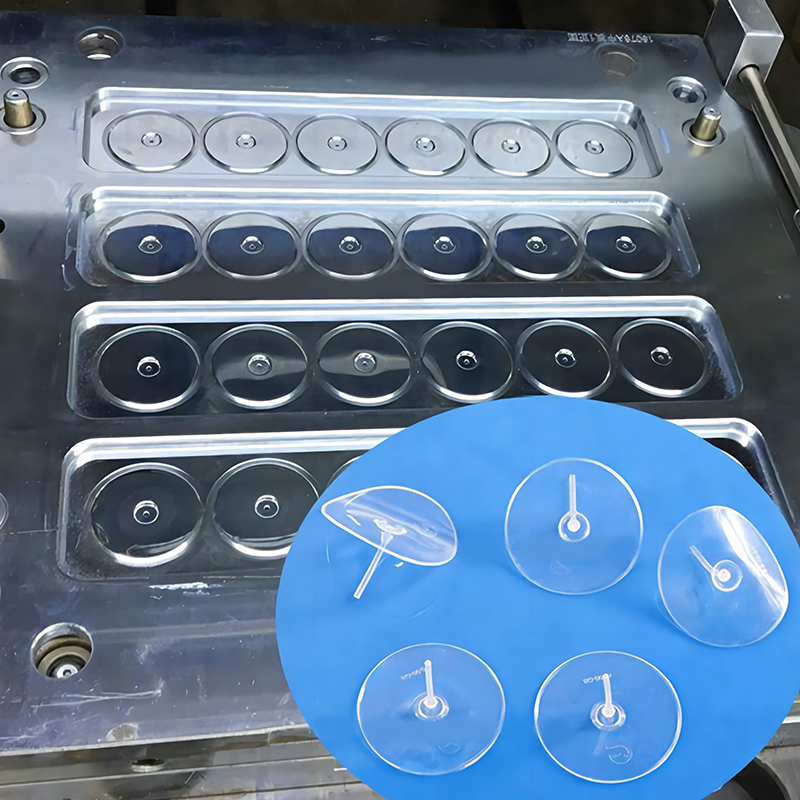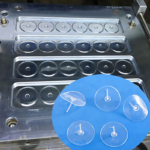Silicone Compression Molding for Rubber Umbrella Valves
Silicone compression molding, also known as rubber compression molding or silicone rubber compression molding, is a production technique that utilizes elastomer materials to manufacture various rubber products and components. This process is particularly effective for creating rubber umbrella valves, which are often made from materials such as silicone, fluorosilicone, FVMQ, EPDM, HNBR, Buna N, Nitrile Rubber, and Neoprene. These materials typically have lower hardness and are well-suited for silicon compression molding.
Design and Structure of Silicone Compression Molds for Rubber Umbrella Valves
Unlike the simplest rubber compression mold structures that consist of only a top mold plate and a bottom mold plate, silicone compression molds for rubber umbrella valves feature a more complex three-plate structure. This three-plate mold includes a top mold plate, a middle mold plate, and a bottom mold plate. This design is essential for producing rubber parts with undercuts, such as rubber umbrella valves and grommets.
Silicone Compression Molding Process for Rubber Umbrella Valves
Step 1: Preparing Silicone Material
The process begins by preparing the silicone material. The material is shaped and sized according to the configuration of the finished part to ensure it fits the mold properly.
Step 2: Positioning Preformed Rubber Material
The preformed rubber material is placed on the middle plate of a heated mold. This positioning is crucial for the material to be adequately compressed and shaped.
Step 3: Molding Under Pressure and Heat
The mold is then closed, and the rubber material is compressed under specific pressure and temperature conditions. This allows the material to fill the mold cavities completely and form the desired shape of silicone umbrella valves.
Step 4: Demolding and Cycle Repetition
After approximately 240 seconds, the mold is opened. The middle plate is removed from the compression mold, and the formed umbrella valve is demolded. This marks the end of one cycle, and the process is ready to start again for the next batch.
Advantages of Silicone Compression Molding
Silicone compression molding offers several advantages for the production of rubber umbrella valves:
- Precision: The three-plate mold structure ensures high precision in creating complex shapes and undercuts.
- Consistency: The controlled pressure and temperature settings guarantee consistent quality across batches.
- Material Versatility: This method accommodates various elastomer materials, providing flexibility in choosing the best material for specific applications.
By utilizing silicone compression molding, manufacturers can produce high-quality rubber umbrella valves efficiently and reliably, meeting the demands of various industries.


